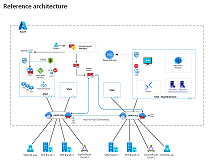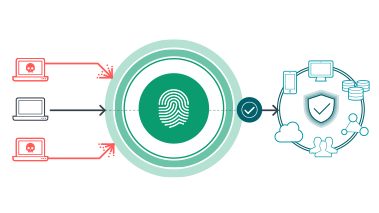- Published on
Demystifying Zero Trust Security Architecture Principles, Practices, and Implementation
- Authors

- Name
- Adil ABBADI
Introduction
In today’s interconnected world, traditional perimeter security models can no longer keep up with emerging cyber threats. Enter Zero Trust Security Architecture—a transformative approach that assumes no user or device, inside or outside the organization, should be automatically trusted. This article takes a deep dive into zero trust, clarifying its concepts, benefits, and actionable strategies for securing modern enterprises.

- Understanding the Core Principles of Zero Trust
- Architectural Elements and Building Blocks
- Implementing Zero Trust: Practical Steps
- Conclusion
- Ready to Start Your Zero Trust Journey?
Understanding the Core Principles of Zero Trust
Zero Trust operates on the mantra of "never trust, always verify." Unlike legacy models that relied on strong perimeters, Zero Trust calls for rigorous authentication, continuous validation, and least-privilege access for every user and device. Here are the essential principles:
- Verify Explicitly: Authenticate and authorize based on all available data points.
- Least Privilege Access: Users and systems get only the access they need.
- Assume Breach: Operate as if the environment is already compromised.
Let’s look at a policy snippet for access verification with conditional logic:
if user.role == 'admin' and device.compliant == True:
grant_access(resource)
else:
deny_access(resource)
This approach ensures that even users with traditionally high trust (like admins) must continuously meet strict criteria for access.
Architectural Elements and Building Blocks
A robust zero trust system comprises several fundamental components, from software-defined perimeters and micro-segmentation to advanced identity and access management (IAM) tools. These architectural elements work in tandem to create several layers of protection.

Key technical pillars:
- Identity Verification (users, applications, devices)
- Network Segmentation and Micro-segmentation
- Continuous Monitoring and Analytics
For example, a network segmentation rule might be implemented as:
segment(network='finance') {
enforce_policy(access='read-only', from='users:contractors')
}
This rule ensures that only specified users/contracts have limited access within a given network segment.
Implementing Zero Trust: Practical Steps
Transitioning to a zero trust framework doesn’t happen overnight—it’s a strategic journey. Below are some actionable steps for rolling out zero trust in your organization:
- Asset Discovery: Identify users, endpoints, apps, and data flows.
- Map Data Flows: Understand interdependencies to inform segmentation.
- Enforce Least Privilege: Deploy strict IAM and policy-based controls.
- Monitor and Adapt: Use threat intelligence and analytics to adjust in real-time.

Here’s a basic policy configuration for strict least-privilege enforcement:
policy {
allow(user='employee', resource='email', action='read')
deny(user='employee', resource='email', action='delete')
}
Such granular policies drastically reduce attack surfaces by limiting actions to what’s strictly necessary.
Conclusion
Zero Trust Security isn’t just a buzzword—it’s a practical and robust philosophy fundamentally altering how organizations approach cybersecurity. By embracing least privilege, robust verification, and continuous monitoring, companies can build more resilient and adaptive defenses against evolving threats.
Ready to Start Your Zero Trust Journey?
Begin mapping your current assets and processes, and experiment with implementing zero trust policies on a small scale. Every incremental step brings your organization closer to a secure, breach-resistant future!
